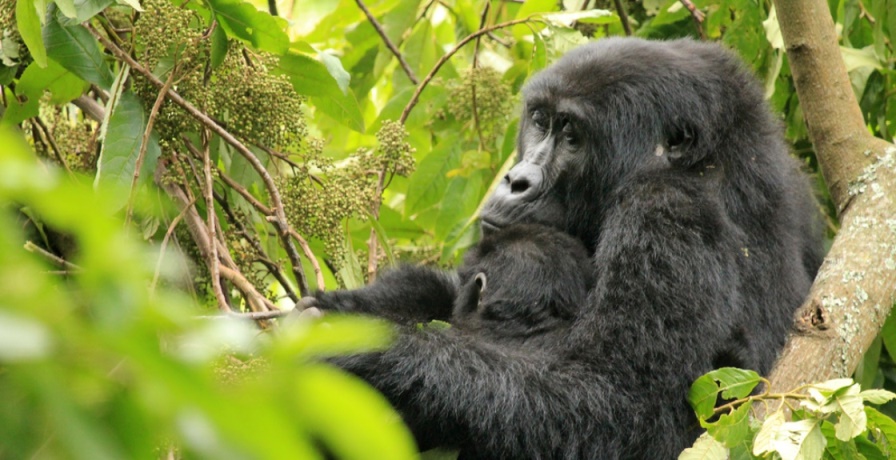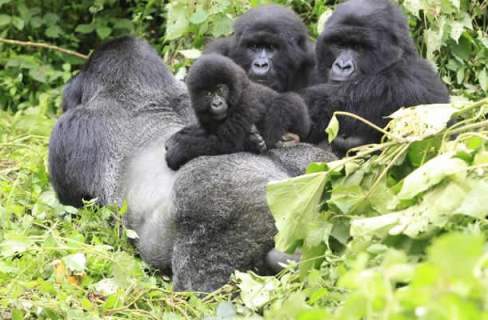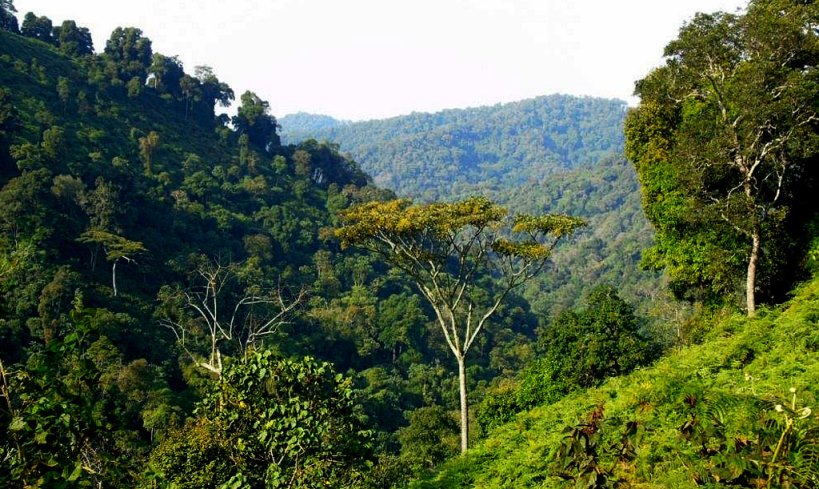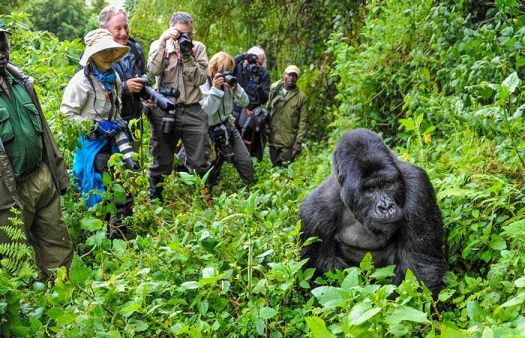Understanding Uganda Mountain Gorillas: Lifestyle and Environment
Experience the Majestic Mountain Gorillas of Uganda – A Journey Beyond the Zoo
A Rare Encounter with Nature’s Gentle Giants
Experience the awe-inspiring presence of Mountain Gorillas in Uganda, a rare species found only in Africa’s wilds. Residing in the dense forests of Uganda’s Bwindi Impenetrable Forest and Mgahinga Gorilla Park, these endangered primates present a unique and unforgettable wildlife encounter.
Historical First Contact and Conservation Beginnings
Imagine a world where gorillas, often depicted in films like King Kong and Tarzan, are real and majestic. These creatures, unknown to the Western world until 1902, were first encountered by Captain von Berenge of Germany while scaling Mount Sabinyo.
Protecting the Mountain Gorilla Legacy
The discovery of Mountain Gorillas sparked curiosity and drew hunters, reshaping our understanding of these gentle giants. Today, you have the opportunity to witness these incredible animals in their natural habitat.
Discover Uganda’s Legacy of Gorilla Conservation – A Story of Nature, Hospitality, and Adventure
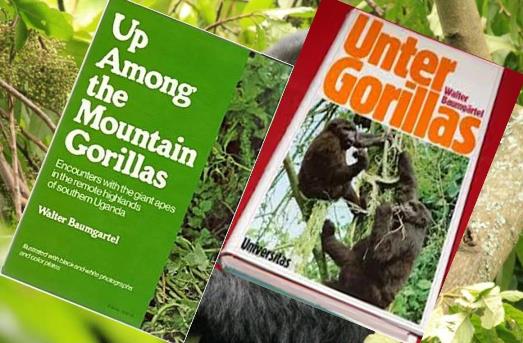 Belgium and Britain, recognizing the importance of the Mountain Gorillas, initiated conservation programs to safeguard these gentle giants. In Uganda, the commitment to protect these magnificent creatures was so strong that, for a long time, visitors were not even allowed to see them. However, in the scenic town of Kisoro, Walter Baumgartel broke new ground. He received special permission to organize visits for guests at his Travellers Rest Inn, a charming retreat that continues to welcome travelers to this day.
Belgium and Britain, recognizing the importance of the Mountain Gorillas, initiated conservation programs to safeguard these gentle giants. In Uganda, the commitment to protect these magnificent creatures was so strong that, for a long time, visitors were not even allowed to see them. However, in the scenic town of Kisoro, Walter Baumgartel broke new ground. He received special permission to organize visits for guests at his Travellers Rest Inn, a charming retreat that continues to welcome travelers to this day.
Baumgartel’s pioneering spirit is immortalized in his book, “Up among the Mountain Gorillas.” This captivating read transports you to the heart of Uganda, sharing Baumgartel’s personal experiences with the majestic apes of southern Uganda. The book is more than just an animal encounter; it’s a love letter to the breathtaking Ugandan countryside, an innkeeper’s journey, and a tribute to the Mountain Gorillas.
The inn’s historical significance is further highlighted by its famous guests. Dian Fossey, the renowned primatologist, and George Schaller, a legendary wildlife biologist, were among those who frequented the Travellers Rest Inn. Their stays there underscore the inn’s role as a haven for those dedicated to gorilla conservation.
Explore the Exclusive Realm of the Mountain Gorillas
Venture beyond the common zoo experience and meet the Mountain Gorillas, a unique subspecies known as Gorilla beringei beringei, distinct from their lowland cousins in Western Africa. These majestic creatures can only be found in the wild, within the dense forests of Bwindi Impenetrable National Park in Uganda and the stunning Virunga mountain range, a natural wonder shared by Rwanda, Uganda, and the Democratic Republic of Congo (DRC).
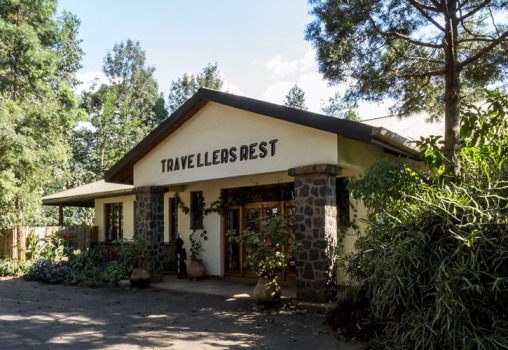 The Virunga region encompasses Rwanda’s Volcanoes National Park, Virunga National Park in the DRC, and Uganda’s Mgahinga Gorilla National Park. Interestingly, Bwindi and Mgahinga parks in Uganda are just 48 kilometers apart, making it a convenient journey for those eager to witness these magnificent animals in their natural habitat. While Uganda and Rwanda offer easy access to their parks, the DRC presents challenges due to rebel activities, making visits potentially risky.
The Virunga region encompasses Rwanda’s Volcanoes National Park, Virunga National Park in the DRC, and Uganda’s Mgahinga Gorilla National Park. Interestingly, Bwindi and Mgahinga parks in Uganda are just 48 kilometers apart, making it a convenient journey for those eager to witness these magnificent animals in their natural habitat. While Uganda and Rwanda offer easy access to their parks, the DRC presents challenges due to rebel activities, making visits potentially risky.
But here’s the good news: Mountain Gorilla populations are on the rise! This success story is a testament to the dedicated transboundary conservation efforts by the governments of Rwanda, Uganda, and the DRC, supported by international organizations. These efforts are bolstered by the involvement of local communities, who benefit directly from a portion of the gorilla trekking fees. This sustainable approach not only aids in conservation but also fosters a strong bond between the gorillas and the people who share their land.
Encounter the Gentle Giants: Unveiling the Mountain Gorilla’s Splendor
Unique Identification and Size Differences
Mountain Gorillas are distinguished by their individual nose prints, similar to human fingerprints. Males typically weigh twice as much as females, marking this subspecies as the largest of the gorilla family.
Distinctive Physical Features
Adult males are notable for pronounced bony crests on their skulls, giving their heads a conical shape, essential for muscle attachment. Females also have these crests, albeit less pronounced. Their dark brown eyes, framed by a black ring around the iris, add to their distinctive appearance.
Size and Strength: Record-Breaking Giants
Standing fully erect, male Mountain Gorillas can reach heights of 1.9 m (6 ft 3 in), with an arm span of 2.3 m (7 ft 7 in) and a weight of 220 kg (490 lb). The tallest and heaviest recorded silverbacks showcase the impressive physical stature of this species.
Adaptation to Habitat: Fur and Climbing Abilities
Their thicker and longer fur enables Mountain Gorillas to live comfortably in colder temperatures. Despite their massive bulk, they can climb fruiting trees and run bipedally for short distances. The young enjoy playing in trees, demonstrating remarkable agility.
Daily Life and Behavioral Patterns
Mountain Gorillas are active mostly between 6:00 a.m. and 6:00 p.m., with a break for a midday nap. They spend many hours eating to sustain their large size and construct new sleeping nests each evening. The males are known for their extraordinary strength, up to ten times that of a strong human.
Conservation: Protecting a Precious Species
The Mountain Gorilla, adapted with longer and darker hair for colder, higher altitudes, is a vital species requiring ongoing conservation efforts. Their unique characteristics and behaviors make them a significant focus for wildlife preservation and ecological study.
Mountain Gorilla Life Cycle: A Journey from Birth to Maturity
The Onset of Maturity
Mountain Gorilla females reach sexual maturity around 7-8 years of age, but they typically start breeding a few years later. In contrast, males mature later, with most beginning to breed only after reaching 15 years.
Challenges in Reproduction
The gorilla’s life cycle is marked by high infant mortality and a long gestation period of approximately 8.5 months. Given their tendency for single births and the need for prolonged maternal care, a female Mountain Gorilla typically rears only one baby every 4-6 years. Over her reproductive lifespan, a female might only have three to four offspring that survive.
Infant Mortality and Adult Longevity
While the mortality rate for gorillas under one year old is notably high, adult gorillas have a much lower mortality rate of about 5%. In their natural habitat, Mountain Gorillas can live to be 40 to 50 years old. Captive gorillas have been known to live longer, with a record of 54 years in the United States.
A Genetic Connection with Humans
An intriguing aspect of Mountain Gorillas is their close genetic link to humans, sharing 98% of our DNA. This remarkable similarity highlights the importance of understanding and conserving these magnificent creatures, as they hold a key to our own biological heritage.
Mountain Gorilla Habitat and Diet: Thriving in Uganda’s Forests
Uganda’s Natural Sanctuaries for Gorillas
In Uganda, Mountain Gorillas find refuge in two main areas: Mgahinga Gorilla Park, part of the picturesque Virunga volcano chain extending into the Democratic Republic of Congo and Rwanda, and the Bwindi Impenetrable Forest National Park, with altitudes ranging from 2,200 to 4,300 meters (7,200–14,100 ft). Bwindi, harboring nearly half of the world’s Mountain Gorilla population, is renowned as the “Place of Darkness” due to its dense canopy. In contrast to Bwindi’s primeval forest, Mgahinga is a volcanic area, offering a different habitat landscape.
Diverse Vegetation Zones
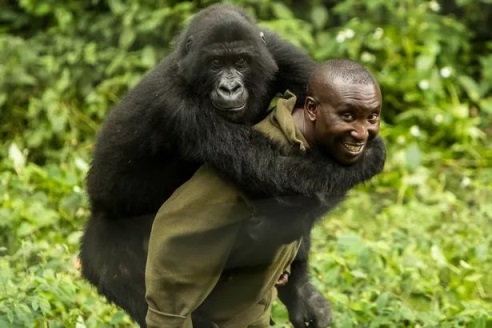 These gorillas’ home ranges, influenced by food availability, encompass various vegetation zones. Key areas include bamboo forests at 2,200–2,800 meters, Hagenia forests at 2,800–3,400 meters, and the giant senecio zone at 3,400–4,300 meters. The Hagenia forests, rich in gallium vines, are a favored habitat, providing a year-round food source.
These gorillas’ home ranges, influenced by food availability, encompass various vegetation zones. Key areas include bamboo forests at 2,200–2,800 meters, Hagenia forests at 2,800–3,400 meters, and the giant senecio zone at 3,400–4,300 meters. The Hagenia forests, rich in gallium vines, are a favored habitat, providing a year-round food source.
Diet: A Herbivore’s Feast
Mountain Gorillas are primarily herbivores, with 85.8% of their diet comprising leaves, shoots, and stems from 142 plant species. They also consume bark, roots, flowers, fruit, and occasionally small invertebrates. An adult male can consume up to 34 kilograms (75 lb) of vegetation daily, while females may eat up to 18 kilograms (40 lb).
Adaptive Feeding Habits
Their diet varies seasonally; they forage on fresh bamboo shoots in specific months and climb to higher regions to eat the soft centers of giant senecio trees. The dense vegetation at lower elevations and sparser foliage at higher altitudes provide a varied diet for these adaptable creatures.
Nesting: A Daily Ritual
Each day, Mountain Gorillas move to new locations to build their sleeping nests from twigs and leaves. Surprisingly, some humans have found these nests comfortable enough for a quick nap, showcasing the gorillas’ skilled nest-building abilities.
Mountain Gorilla Social Structure: Understanding Their Complex Societies
Leadership and Group Composition
Understanding the fears and threats faced by mountain gorillas in Uganda and the rest of the Virunga Mountains is crucial for their ongoing protection. The dominant silverback, typically leading for about 4.7 years, is the core of each group. While 61% of groups consist of one adult male and several females, 36% have multiple adult males. The rest are either solitary males or all-male groups. Group sizes vary, averaging ten members, including one dominant silverback, one or two blackbacks as guards, three to four females bonded to the silverback for life, and several juveniles and infants.
Dynamics of Leaving the Natal Group
Most males, along with about 60% of females, eventually leave their birth group. Males depart around age 11, gradually distancing themselves before leaving completely. This natural dispersal ensures genetic diversity within the population.
The Role of the Dominant Silverback
The dominant silverback guides the group to feeding areas and mediates internal conflicts. In times of danger, from humans or predators, he is the protector, often sacrificing himself for the group’s safety. During rest, he is the focal point, engaging with the young and caring for orphaned offspring, showcasing his vital role in nurturing and cohesion.
Crisis and Continuity
When a silverback dies, the group faces a crisis. If no capable male descendant is present, the group may disband or fall under a new male. This new leader may practice infanticide, eliminating the previous silverback’s offspring to hasten reproduction with the females, a harsh yet effective strategy in gorilla social dynamics.
The Impact of Infanticide
Infanticide is generally not observed in stable groups, underscoring its role as a disruptive but biologically strategic behavior in times of leadership transition.
Mountain Gorilla Behavior: Understanding Their Peaceful Nature and Social Dynamics
Gentle Giants in Their Natural Habitat
Observing the behavior of Mountain Gorillas in Uganda offers unique insights into their gentle nature. Gorillas exhibit gentleness and shyness despite their formidable strength in Bwindi Impenetrable Forest and other habitats. Tourists encounter habituated gorillas, which have become accustomed to human presence over a two-year habituation process. Initially, Dian Fossey opposed these interactions, but controlled tourism is now widely recognized as a significant contributor to their conservation and population growth.
Aggression: A Rare Occurrence
I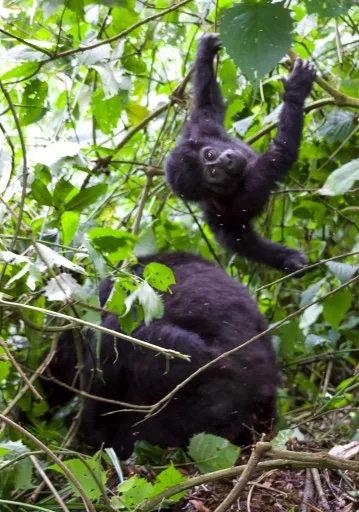 n stable groups, severe aggression is uncommon. However, intergroup conflicts can occur, particularly between silverbacks, which can lead to serious fights. These confrontations follow a ritualistic pattern, escalating from hooting and symbolic feeding to more aggressive displays like chest-beating and ground thumping. Rangers may intervene if such fights break out.
n stable groups, severe aggression is uncommon. However, intergroup conflicts can occur, particularly between silverbacks, which can lead to serious fights. These confrontations follow a ritualistic pattern, escalating from hooting and symbolic feeding to more aggressive displays like chest-beating and ground thumping. Rangers may intervene if such fights break out.
Social Structure and Reproduction
Mountain Gorilla groups typically range from 2 to 40 members, with an average of 11. There’s no specific mating season, and females can give birth every two to three years, starting from the age of 10-12. Males begin breeding around 15 years of age. Females generally have 4 to 6 offspring in their lifetime. Both male and female gorillas often leave their natal group as they mature, with males departing around age 11.
Bonding and Social Interaction
The midday rest period is crucial for reinforcing social bonds. Mutual grooming, although less common than in other primates, is an important activity for maintaining relationships and hygiene. Young gorillas engage in playful activities like wrestling and chasing, essential for their social and physical development. The silverback and adult females engage with and nurture the young, creating a supportive and cohesive group environment.
Communication Through Vocalizations
Mountain Gorillas have a repertoire of 25 distinct vocalizations used for communication. Grunts and barks are common during travel, serving to maintain group cohesion. Screams and roars are alarm calls, typically emitted by silverbacks. The most frequent sounds are deep, rumbling belches, indicating contentment, especially during feeding and resting, highlighting their peaceful nature.
Mountain Gorilla Fears and Threats: Understanding their Vulnerabilities
Innate Fears of the Mountain Gorilla
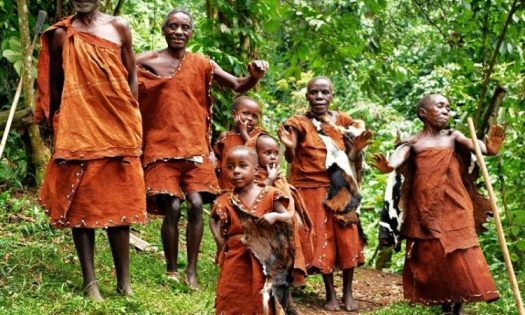 Mountain Gorillas display an intriguing fear of certain reptiles and insects. Even the naturally curious infants will deliberately avoid chameleons and caterpillars. This fear extends to other species as well; Koko, a western lowland gorilla known for her sign language abilities, exhibited a fear of crocodiles and alligators despite never encountering them in the wild. Additionally, these gorillas have an aversion to water and prefer to cross streams without getting wet, using fallen logs when possible. They also show a clear dislike for rain, preferring to stay dry, as noted by primatologist Dian Fossey.
Mountain Gorillas display an intriguing fear of certain reptiles and insects. Even the naturally curious infants will deliberately avoid chameleons and caterpillars. This fear extends to other species as well; Koko, a western lowland gorilla known for her sign language abilities, exhibited a fear of crocodiles and alligators despite never encountering them in the wild. Additionally, these gorillas have an aversion to water and prefer to cross streams without getting wet, using fallen logs when possible. They also show a clear dislike for rain, preferring to stay dry, as noted by primatologist Dian Fossey.
Predators and Human Threats
While Mountain Gorillas have few natural predators, the greatest threat comes from human activities. The expansion of nearby villages and the ‘slash and burn’ approach to land use have historically posed significant risks. However, through government-led education and tourism-based economic incentives, Uganda and Rwanda have made progress in reducing these threats, unlike in the Democratic Republic of Congo, where poaching remains a more serious issue.
Disease Transmission Concerns
Another critical threat to Mountain Gorillas is the transmission of diseases from humans. This risk is managed by strict regulations enforced by park authorities, aiming to prevent the spread of human-borne illnesses to these sensitive primates. These measures are essential to the ongoing conservation efforts, ensuring the health and safety of the Mountain Gorilla populations. By visiting Mountain Gorillas in Uganda, tourists contribute to the conservation and awareness of this magnificent species.
Witnessing Mountain Gorillas in Uganda is a transformative experience. Lifetime Experience Safaris invites you to embark on this unforgettable journey, offering expert guidance and once-in-a-lifetime encounters. Contact us for an adventure that not only inspires but also contributes to the vital conservation of these majestic creatures.
Useful links to check out:
- Bwindi Impenetrable Forest Gorilla Trekking Guide
- Discover Uganda’s Chimpanzee Kingdoms & Beyond.
- Habituated Mountain Gorilla Families in Bwindi Impenetrable National Park – Uganda
- About Lifetime Experience Safaris – Your Guide to Ugandan Safaris
- Ultimate Guide to Tipping and Daily Costs on a Ugandan Safari
- Uganda Wildlife Authority (UWA): the official site for information on conservation efforts, park regulations, and wildlife in Uganda.
- World Wildlife Fund (WWF) – Mountain Gorilla – for extensive information on Mountain Gorillas, their habitat, threats, and global conservation status.
- Dian Fossey Gorilla Fund International: Offers detailed insights into Dian Fossey’s work and ongoing conservation efforts for Mountain Gorillas.
